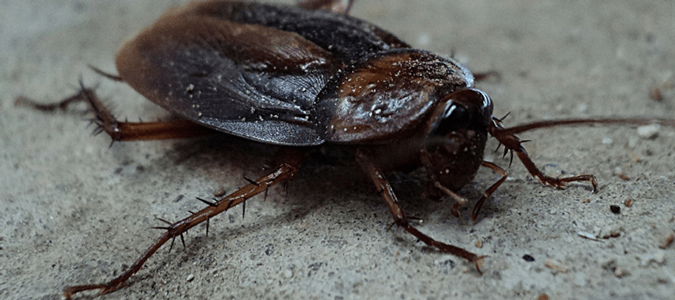
Roaches are excellent at hiding. When it comes to fight or flight, this family of insects has evolved to excel at dodging attempts by humans to somehow squish or squash them. That’s why cockroaches have managed to remain one of humanity’s biggest pest problems for centuries. In fact, the cockroach family has thrived here on Earth for over 300 million years!
During the day, you rarely spot one of these creepy crawly creatures, but at night, you can often find them in your bathroom or running across your kitchen floor. This Houdini-like ability to disappear often elicits the same question: where do roaches hide?
Roaches: Nature’s Best Escape Artists
Almost 70 species of cockroaches are found in the United States, and most of those rarely make their way inside our homes. Unfortunately, once you see one roach, chances are that there could be tens or hundreds that you haven’t seen. The most common cockroach species you will probably run across in your house are American, German, Oriental (sometimes known as water bugs), brown-banded and smoky-brown roaches.
While there is no definitive answer to how these insects manage to elude the human eye so well, research suggests that the microscopic hairs on the outside of their bodies have evolved to sense slight changes in airflow caused by movement of other animals, like people, inside of rooms.
This adaptive measure means that roaches will win a game of Hide-And-Seek against even the most skilled searcher.
Common Cockroach Hiding Spots
Have you ever opened the trash can late at night to find a giant roach picking over your scraps? Although you may have found the experience to be horrifying, this is not an uncommon occurrence. Cockroaches will forge a path to an easy source of food, like your trash, and then build their nests in tight, secure spots nearby. Other places these pests take refuge are in any small holes or cracks inside your home.
Cracks and Crevices
If your home is older or has foundation problems, you probably have noticed cracks in the walls at corners and near doors. Bathroom tiles can expand and contract with temperature changes, causing caulking to crack in between tiles. Young cockroaches can easily fit into these cracks and crevices to hide out until the evening when they sense that humans are away.
Holes in Walls and Drywall
If you have a hole in your wall, you may be running the risk that this spot could become a roach entryway from the outside to your kitchen. Because prevention is the best protection against pests like cockroaches, your best bet is to conduct a thorough examination of your home’s interior to locate and seal each hole you find.
Where Do Cockroaches Lay Eggs?
Some cockroach species carry egg sacs called ootheca, which can carry dozens of larval cockroaches at a time, and leave the sac in a safe spot after a period of a few days or once the eggs are ready to hatch. These nesting locations include crevices in baseboards along the walls, between bathroom tiles, deep within kitchen cabinetry and underneath furniture.
There are a few signs that can point you toward roach nests. First, start by taking a closer look at cracks and crevices to find cockroach nests. If you have cockroaches, you will most certainly find cockroach droppings near where they nest. The droppings look to humans like black particles and can resemble cracked black pepper. You may see these droppings along the floors of your bathroom or kitchen and inside cabinets.
You may think you hear cockroaches moving about in your home. Some homeowners insist they detect the sound of their wings fluttering and clicking sounds. Although some cockroach species in other countries make hissing noises, the truth is that most roaches are silent.
Cockroach Control Techniques
If a cockroach senses your presence, it will either cease movement or quickly run away, depending on how close or far you are from them in the room. The skittish nature of roaches makes it difficult to kill them with sprays or shoes.
Sometimes, your pets can assist with cockroach control. We all know cats love to chase rodents. Rodents and cockroaches share uncanny escape abilities, which cats and some hunting dogs have evolved to outsmart. Dogs can sniff out the roach hiding spots and cats can spot their subtle movements from a mile away. We’ve even heard stories of homeowners letting their lizards loose in the home to catch the bugs.
An out-of-the-box idea for savvy homeowners looking to outsmart these expert hiders is to change up the airflow in the room while on the hunt. When you’re looking for roaches, try turning ceiling fans up full-speed or turning the music up to a loud setting. Music reverberates, which cockroaches may sense with their hairs.
Another idea is to use a vacuum. Stepping on cockroaches is messy, but because these insects sense changes in wind and air movement, the suction of a vacuum can confuse them into revealing themselves accidentally.
ABC Can Find Roach Hiding Spots and Evict These Pests
If you really want to control pests, your best bet is to determine how they got inside, seal all entry points and regularly treat the impacted area to prevent them from coming back. ABC uses a proven integrated pest control method to eliminate these prevalent pests. Our skilled technicians can answer any questions you have about cockroaches and any other common household pests and develop a plan with you to get rid of these pests for good.

Comments
Does the palmetto bugs are bites?